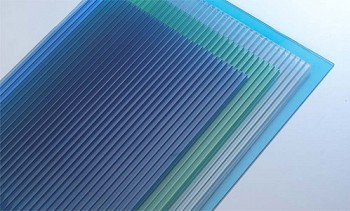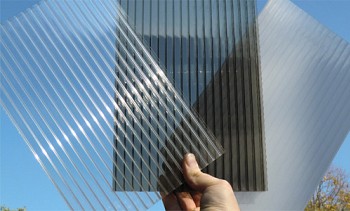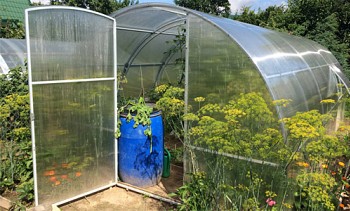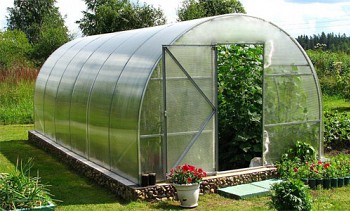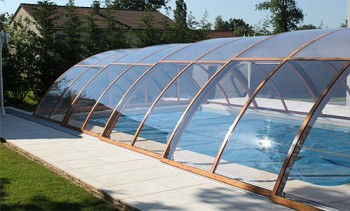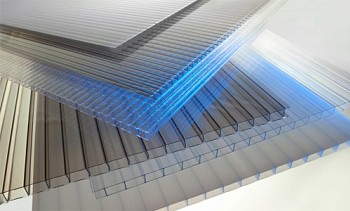Which polycarbonate is best used for a canopy
Transparent and colored plastics are widely used in construction for the manufacture of building envelopes. To reasonably answer the question of which polycarbonate is better for a canopy, you need to understand its properties and characteristics. Manufacturers offer two types of panels: honeycomb and monolithic of different thicknesses and colors. Made from the same raw materials, they have a lot of differences.
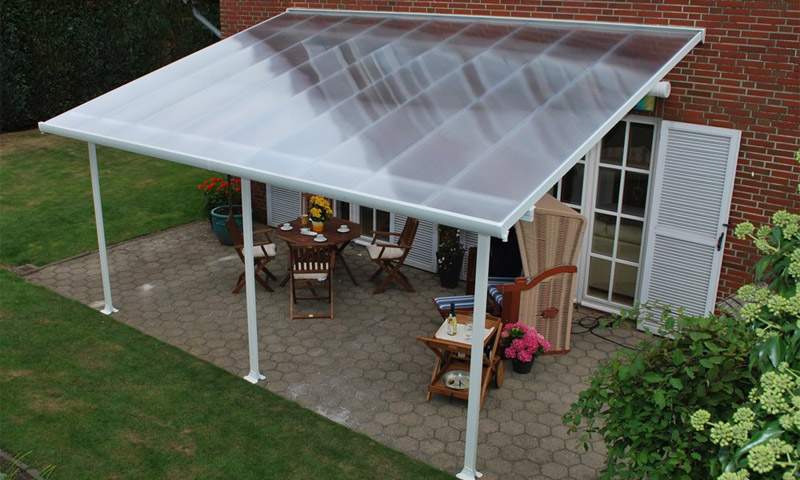
Content:
Cellular or monolithic polycarbonate: comparative characteristic
The choice of plastic type is determined by several factors and, above all, the requirements for the coating material for a particular canopy design. The properties of polycarbonate directly depend on the structure: honeycomb panels are hollow and have a lower specific gravity than monolithic ones. Accordingly, the cost of the sheets is different, the first will cost much cheaper.
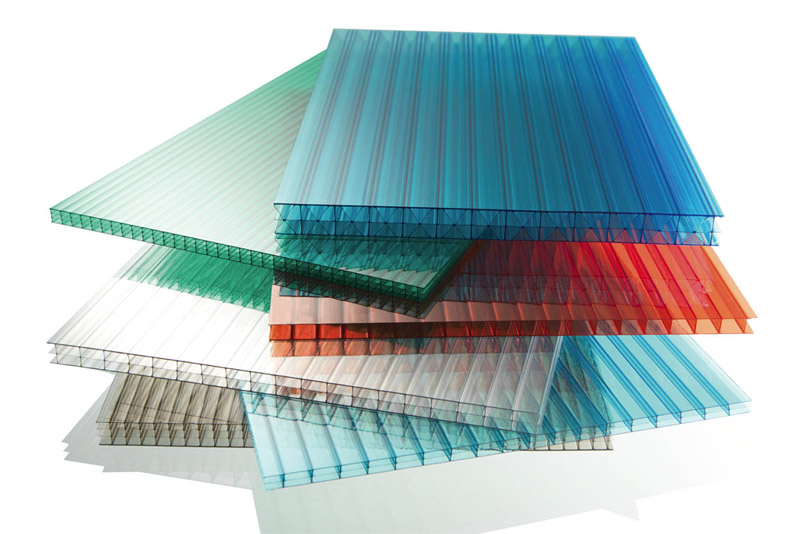
Cellular polycarbonate of various colors.
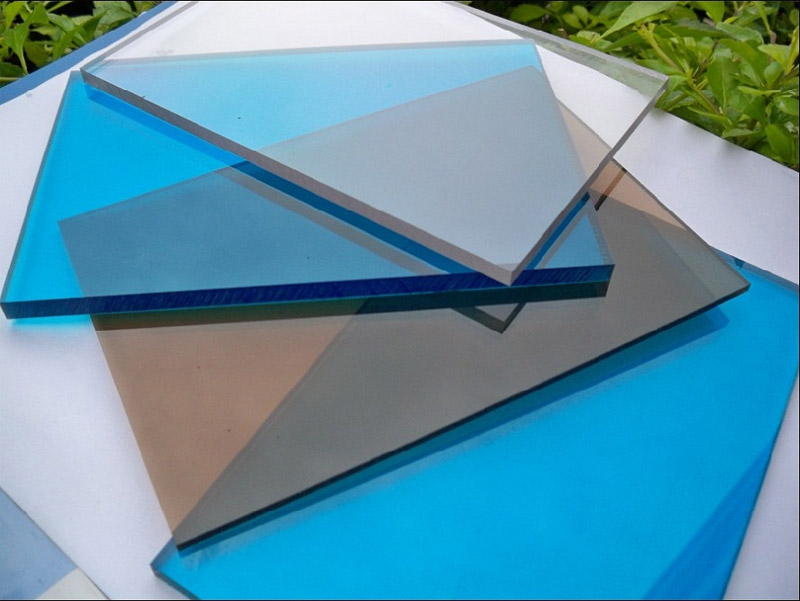
Monolithic polycarbonate.
The most important criterion for choosing the type of polycarbonate are its decorative properties. If a stylistic solution requires the use of material similar in appearance to silicate glass, then monolithic sheets should be preferred. This material allows you to create original designs, including complex shapes. In addition to transparent panels, there is a large selection of painted in a variety of colors.
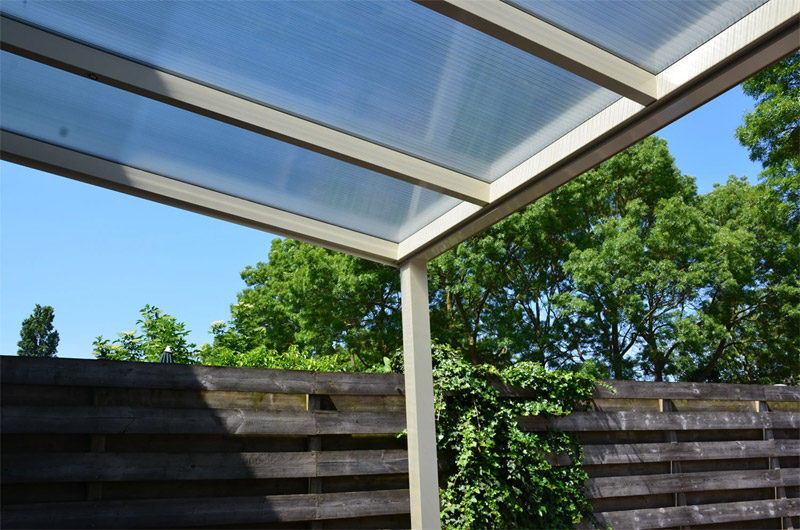
Canopy made of cellular polycarbonate.
Functional and practical canopy without special design frills is made of cellular polycarbonate. The low specific weight of the panels makes it possible to extremely lighten the supporting frame, provided that the necessary strength and stability are ensured. In the manufacture of the power structure for such a canopy, a smaller steel section is used, which gives considerable savings.
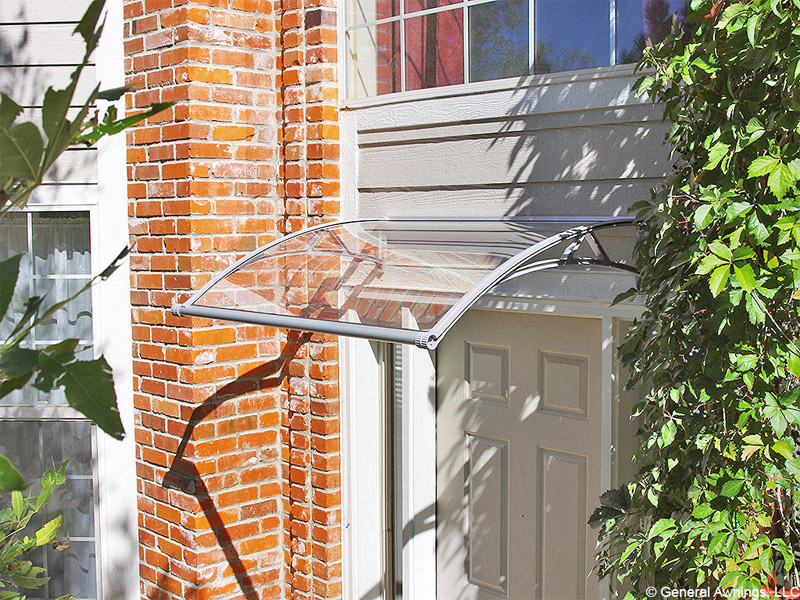
Monolithic polycarbonate canopy.
The choice between cellular or monolithic polycarbonate directly depends on its properties and characteristics. In the manufacture of canopies, sheets are usually used with a thickness of more than 6 mm, for ease of comparison, the table shows the parameters for such panels of different types. For analysis, the properties that determine the operational characteristics of the canopy were selected:
| Specifications | Units meas. | Types of Polycarbonate | |
|---|---|---|---|
| Cell | Monolithic | ||
| Standard sheet width | mm | 2100 | 2050 |
| Panel Length | mm | 6000 and 12000 | 3050 |
| Panel Weight | kg / m2 | 1,3 | 7,2 |
| Minimum bending radius of the panel | m | 1,05 | 0,9 |
| Light transmittance | % | 82 | 85 |
| Heat transfer resistance | m2 ° C / W | 0,28 | 0,2 |
| Sheet Life | year | 10 | 25 |
Comparison of the parameters of polycarbonate clearly shows that cellular polycarbonate is almost six times lighter than monolithic. But the latter is 2.5 times superior to its competitor in terms of service life. For other characteristics, the differences are not so significant. When choosing the type of panel, other factors are also taken into account: economic and decorative, as well as the geometric dimensions and purpose of the canopy.
Such structures are usually constructed to overlap the following objects:
- parking lots;
- balconies or terraces;
- pools;
- public transport parking;
- visors and transitions between buildings.
One of the most important characteristics of the panels is resistance to mechanical stress. In this regard, cellular polycarbonate is much inferior to monolithic. The anti-vandal properties of the latter allow it to be used in public places where the probability of deliberate damage to the structure is quite high.
Optimum polycarbonate thickness for the canopy
Technical specifications of both cellular and monolithic panels depend on several factors.To solve the question of which polycarbonate for the canopy, it is better to choose, first of all, it is necessary to determine its optimal thickness for a particular design. Regulatory documents in the field of construction SNiP 21-01-97 and SNiP II-3-79 contain recommendations on the use of this type of finishing materials.
How to determine the thickness of the sheets of cellular polycarbonate
When determining the optimal thickness of polycarbonate, the purpose of the canopy and the level of load on the structure are taken into account. If we consider cellular polycarbonate, then we can give the following recommendations:
- 4 mm panels can be used for relatively small structures with a significant radius of curvature, most often such polycarbonate is used for greenhouses and small peaks.
- Polycarbonate sheets with a thickness of 6 and 8 mm are used to cover structures exposed to significant wind and snow loads, these can be canopies for cars or pools.
- Panels with a thickness of 10 mm and more are suitable for the installation of canopies that are subjected to extreme climatic and mechanical environmental influences.
The structure of the internal stiffeners has a significant impact on the strength characteristics of the panel. This circumstance should be taken into account when determining the optimal sheet thickness and design features of the canopy. The dependence of the thickness of the sheet of cellular polycarbonate, on the size of the cell crates for the canopy, is shown in the graph below:
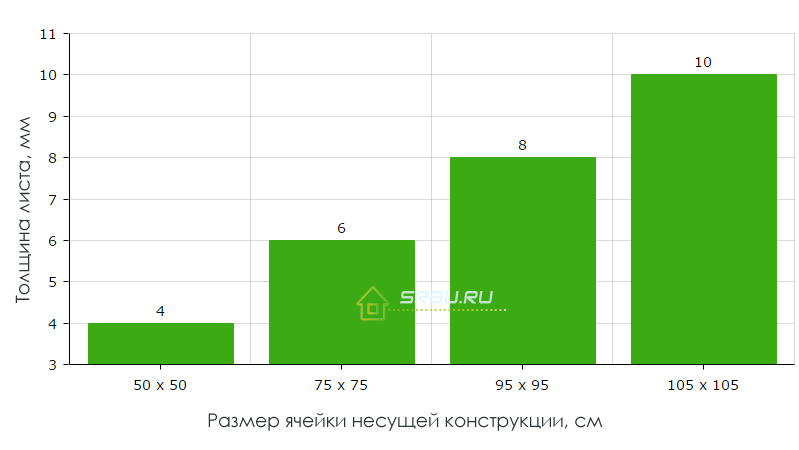
The snow load on the structure is calculated taking into account the requirements of SNiP 2.01.07-85 for a specific climatic region of the country. For cellular polycarbonate, the internal structure of the sheet for panels with a thickness of 16 mm or more is also important. Such sheets can be three- and five-layer with cells of a rectangular or triangular shape.
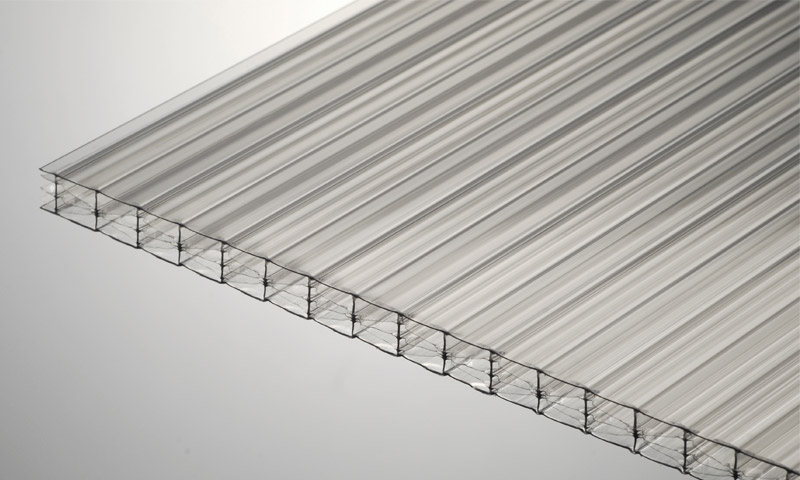
How to determine the thickness of sheets of monolithic polycarbonate
Depending on the purpose of the canopy, sheets of monolithic polycarbonate with a thickness of 2 to 12 mm are used for its manufacture. This material is more durable than cellular polycarbonate. For car canopies and peaks, as a rule, polycarbonate is used with a thickness of 4-6 mm, because it is precisely this thickness of the material that can guarantee the reliability of the structure at different times of the year.
Polycarbonate Canopy Color Guidelines
Architectural elements and building structures are perceived by others as part of a single ensemble. When deciding on the choice of polycarbonate color for a canopy, the general background and color of structures adjacent to nm are taken into account. Especially popular among the population are blue, green, dairy and bronze panels. They least distort the true colors of the objects below them. When using colors such as red, orange and yellow, one should take into account the fact that all objects located under a canopy covered with any of these materials will have the appropriate shade.
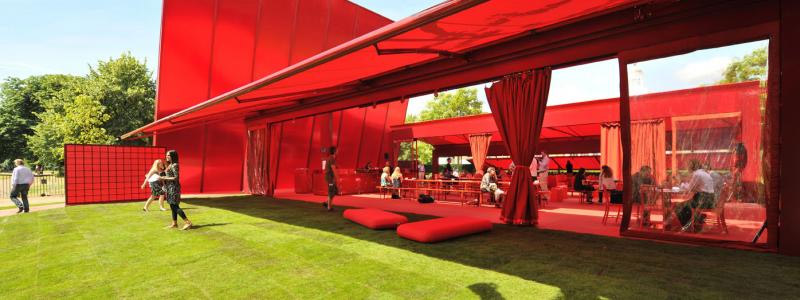
An example of using cellular red polycarbonate and changing the shades of objects underneath.
In addition to conventional translucent panels, there are also completely opaque sheets of silver or black. The use of such panels is appropriate for awnings, which should provide maximum shading of the interior space. Usually the color of the canopy matches the tone of the roofing material of the roof of the main structure, however, contrasting solutions also have a right to exist.
When designing protective and decorative structures, many factors are taken into account. When deciding how to choose polycarbonate for a canopy, the type of material, its thickness and color are determined, first of all. Cellular panels are applicable for private construction and construction of structures inaccessible to humans. Monolithic polycarbonate is used for anti-vandal structures and other architectural elements of the original form.

